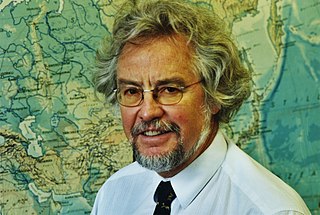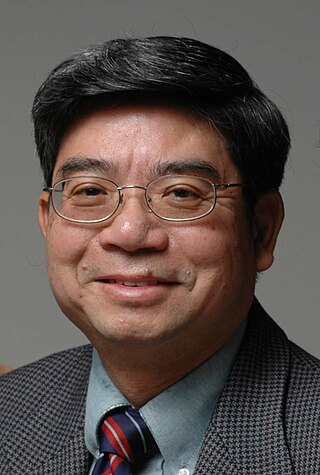
École Centrale de Nantes, or Centrale Nantes, is a grande école – a French engineering school – established in 1919 under the name of Institut Polytechnique de l'Ouest. It provides Bachelor, Graduate, Master, and PhD Programmes based on the latest scientific and technological developments and the best management practices.

A culvert is a structure that channels water past an obstacle or to a subterranean waterway. Typically embedded so as to be surrounded by soil, a culvert may be made from a pipe, reinforced concrete or other material. In the United Kingdom, the word can also be used for a longer artificially buried watercourse.

Seabed gouging by ice is a process that occurs when floating ice features drift into shallower areas and their keel comes into contact with the seabed. As they keep drifting, they produce long, narrow furrows most often called gouges, or scours. This phenomenon is common in offshore environments where ice is known to exist. Although it also occurs in rivers and lakes, it appears to be better documented from oceans and sea expanses.
The National Research Institute of Electronics and Cryptology of Turkey, shortly UEKAE, is a national scientific organization with the aim of developing advanced technologies for information security. UEKAE is the most prominent and also the founder (first) institute of the TÜBİTAK.
Attila Aşkar is a Turkish civil engineer, scientist and former president of the Koç University in Rumelifeneri, Istanbul, Turkey during 2001 and 2009.

Marine engineering is the engineering of boats, ships, submarines, and any other marine vessel. Here it is also taken to include the engineering of other ocean systems and structures – referred to in certain academic and professional circles as "ocean engineering". After completing this degree one can join a ship as an officer in engine department and eventually rise to the rank of a chief engineer. This rank is one of the top ranks onboard and is equal to the rank of a ship's captain. Marine engineering is the highly preferred course to join merchant Navy as an officer as it provides ample opportunities in terms of both onboard and onshore jobs.

In fluid dynamics, vortex-induced vibrations (VIV) are motions induced on bodies interacting with an external fluid flow, produced by, or the motion producing, periodic irregularities on this flow.

Coastal engineering is a branch of civil engineering concerned with the specific demands posed by constructing at or near the coast, as well as the development of the coast itself.

The Institut des Sciences de l'Ingénieur de Toulon et du Var, or ISITV, was a French public engineering school. It was located in the south of France, between Toulon and Hyères, on the French Riviera. In 2014, the school merged with Supméca to form a new engineering school called SeaTech.

Günther F. Clauss is a German professor for Naval Architecture and Ocean Engineering.
Chiang Chung "CC" Mei is a Taiwanese-American physicist who is the Ford Professor of Engineering, Emeritus, at the Department of Civil and Environmental Engineering of Massachusetts Institute of Technology, known for his contributions in fluid mechanics with applications to civil, environmental, and coastal engineering.

Ronald W. Yeung is a Distinguished Professor of Hydromechanics and Ocean Engineering at the University of California, Berkeley. He is one of the pioneers in the field of numerical ship hydrodynamics and marine renewable energy.

Subhasish Dey is a hydraulician and educator. He is known for his research on the hydrodynamics and acclaimed for his contributions in developing theories and solution methodologies of various problems on hydrodynamics, turbulence, boundary layer, sediment transport and open channel flow. He is currently a distinguished professor of Indian Institute of Technology Jodhpur (2023–). Before, he worked as a professor of the department of civil engineering, Indian Institute of Technology Kharagpur (1998–2023), where he served as the head of the department during 2013–15 and held the position of Brahmaputra Chair Professor during 2009–14 and 2015. He also held the adjunct professor position in the Physics and Applied Mathematics Unit at Indian Statistical Institute Kolkata during 2014–19. Besides he has been named a distinguished visiting professor at the Tsinghua University in Beijing, China.
The RV TÜBİTAK Marmara is a Turkish research vessel owned by the Scientific and Technological Research Council of Turkey (TÜBİTAK) and operated by its newly established Marine Research Center for oceanographic research studies.
The TÜBİTAK Marmara Research Center, shortly TÜBİTAK MAM, is a Turkish scientific and technological center carrying out research projects through its subordinate institutes on basic and applied science fields in the area of industrial needs to contribute to the increase of the global competitive power of the country. It was established in 1972 by the Scientific and Technological Research Council of Turkey in Gebze, Kocaeli Province bringing a number of research units of TÜBİTAK formed in the past under one umbrella. The center is currently headed by Prof. Dr. İbrahim Dinçer.
Mustafa İnan (1911–1967) was a Turkish civil engineering academic.
Hydrodynamic scour is the removal of sediment such as silt, sand and gravel from around the base of obstructions to the flow in the sea, rivers and canals. Scour, caused by fast flowing water, can carve out scour holes, compromising the integrity of a structure. It is an interaction between the hydrodynamics and the geotechnical properties of the substrate. It is a notable cause of bridge failure and a problem with most marine structures supported by the seabed in areas of significant tidal and ocean current. It can also affect biological ecosystems and heritage assets.

Mustafa Tuna is a Turkish engineer, academic, and politician, who served as the 28th mayor of Ankara between November 2017 and April 2019.

R. Cengiz Ertekin is a professor of Marine Hydrodynamics and Ocean Engineering. He currently holds a guest professor position at Harbin Engineering University of China. He is best known for his contributions to the development of nonlinear water wave theories, hydroelasticity of very large floating structures (VLFS), wave energy, and tsunami and storm impact on coastal bridges. He is also the co-developer, along with Professor H. Ronald Riggs of the University of Hawaiʻi, of the computer program HYDRAN for solving linear fluid-structure interaction problems of floating and fixed bodies.

Jørgen Fredsøe (1947) is a Danish hydraulic engineer who is recognized for his contributions within bed form dynamics in rivers and the marine environment and coastal morphology including bars and beach undulations. Together with professor B. Mutlu Sumer he initiated the research on scour (erosion) in the seabed around coastal structures applying detailed hydrodynamic interpretations. He was born in Randers, Denmark.













